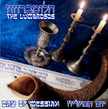And the Word became flesh and dwelt among us, and we have seen his glory, glory as of the only Son from the Father, full of grace and truth.
Yesterday was the day after the last day of the Festival of Tabernacles. That day is called in Hebrew ‘Simchat Torah’; ‘Simcha’ means: joy, ‘Torah’ means: Teaching/Instruction, capitalized as to refer to: God’s Teaching and Instruction. Translated into English, this day could be called: ‘The Rejoicing of the Torah/Teaching’.
Isn’t it strange to give a human virtue to something that is not biologically human? O my friend, come with me and look a little deeper. There is a tradition in Judaism that on the twenty-third day of the month of Tishrei, in synagogues around the world Torah scrolls are taken out of their arks and put in the arms of congregants. On that day, you see otherwise austere rabbis laugh, and dance holding the Torah scroll in their arms. People will have a great party surrounding the ‘dancing of the Torah’. What is this party and dancing of the Torah all about?
Upon returning to Jerusalem from Babylon, Ezra understood that the country went to exile because of their disobedience to God’s commands. He then felt concerned for people to be more exposed to the Torah so he established a national reading schedule. This schedule took the people of Israel through weekly sections that completed the whole Torah in a year’s time. The twenty-third of Tishrei is the day when this schedule is completed and Torah scrolls are rolled back to their beginnings to start a new cycle in the following week.
On that day, the Torah rejoices that It has been read and studied through for a whole year. The Torah is now looking forward to teach God’s people again for another reading cycle. The Torah wants to dance, laugh, and rejoice but It has no mouth, no legs and no arms. The Torah wants to dance, but It has no body.
On Simchat Torah, we take the Torah in our arms and we become the singing and rejoicing mouth, the dancing legs and the waving arms of the Torah. In essence, we become an incarnation of the Torah to allow It to rejoice in us and through us.
This application of rejoicing in the Torah shows that Jewish sages understood the idea of the Torah incarnated in us as Jeremiah taught it (Jeremiah 31:31-40). All the more, it shows that they understood the idea that the Messiah would be a Son of Man (in Hebrew: Son of Adam) who would be the Incarnation of the Torah, of the Commandments of God spoken at Mt Sinai.
Yeshua, the son of Joseph and Miriam was truly the Son of Adam Who became the incarnation of the Torah, and Who also lives in us causing us to dance, laugh, and rejoice.
 RSS Feed
RSS Feed


